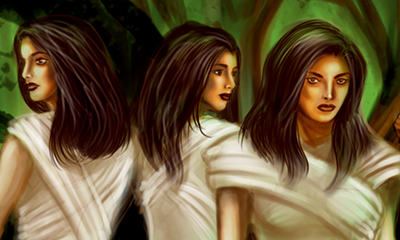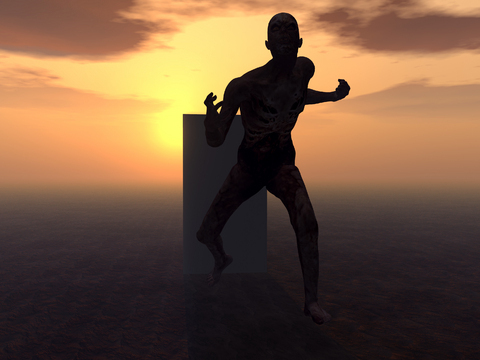G.A. Albrethsen's Blog: Age of Restoration, page 3
September 26, 2013
Twitter: The real lost manual

© Creatista | Dreamstime Stock Photos & Stock Free Images
That’s right. There must be a lost manual for Twitter, where all the proper etiquette is spelled out. I say lost, because I’ve never seen it. Every blog post and book I’ve ever read about Twitter tells you to do the exact opposite of what the most successful people on Twitter are doing.
I’ve decided I should at least highlight some of what that lost manual must look like.
Before I do, I want to be clear. I don’t agree with any of what follows. It’s just obvious to me that way too many people think this is how it should be.
Okay. Here’s the gist of that lost manual.
Want to be successful on Twitter?
Be obnoxious. Talk about things you know nothing about. Make personal attacks on people you disagree with. Blurt out totally random things. Tweet incessantly about your favorite television show, movie, celebrity or song.
People will notice you if you do. And they’ll want to follow you. In droves.
The best thing you can do, however, is be famous. If you’re known for anything, use it. Doesn’t matter what you’re famous for, either. You could be that guy who played that guy who played a guy playing a guy. Guaranteed 10,000 followers, no problem. Make a cameo on some show, pop up in a commercial somewhere, post a Vine video, next thing you know, 10,000 more followers.
The very last thing you want to do is engage in any meaningful dialogue. Frivolity and frivolousness are the key. Keep it totally trivial, be indignant about anyone who might mock you, and people will love you for it.
After all, it’s all about who can get noticed for the least amount of effort. Profanity-laced tweets will do it. Racy photos. Nothing is too vain or too over-the-top. If it helps, get drunk first.
There are no experts. It’s your opinion that counts. Tear down with your 140-characters. Fight back if they try to drag you down. Touch off a Twitter war of epic proportions. You’ll get noticed. Tweeps will clamor to follow you.
Oh, I should mention that it helps a lot to be good looking. The prettier, the better. Your followers want selfies. Doesn’t matter where you are or what you’re doing. Brushing your teeth, eating, watching The Voice. People want to know every last mundane thing you do.
If you are good looking and famous, well, you’ll have them eating out of the palm of your hand, and your Twitter domination will be complete.
Be prolific. Have a Twitter program like TweetDeck or online browser-based subscription to HootSuite? Load ‘em up! Throw every last inane thing in there. Then, go back and delete what you just sent out and load ‘em up again!
The more you send, and the more it’s the same, the better.
Be awkward. Sound off at the smallest thing. Pick out throw away lines from movies and speeches and harp on those as if they were all there was.
Punk your followers with kidnapping ploys. Start your own RIP trending. Then, debunk them days later with pleas of privacy. Follow that up a week or so later with a shot of you in your underwear, sprawled out on the living room floor, watching reruns of Barney, surrounded by empty Taco Bell wrappers.
Best yet. Ignore everyone else. Never retweet or reply to anyone whoever tries to engage you, unless it’s to trash them. Don’t follow others. Self-promotion alone is the key. Everyone else, they’re just cannon fodder to your greatness, baby.

September 25, 2013
The 30,000

© Zeitgeistlondon | Dreamstime Stock Photos & Stock Free Images
Before I became my own book publisher, I was an owner and publisher of two weekly newspapers.
In the 15 years that I owned and published newspapers, I realized a lifelong dream of being a businessman. I experienced firsthand what it was like to meet deadlines and payrolls, pay health insurance premiums for my family and those of my employees, pay taxes and wonder way too often if we were going to make it through another month.
I’d like to report that our situation always looked good, but it didn’t. Worse, after a patch of bad times, even the good times felt fleeting. I kept waiting for the other shoe to drop.
Still, if I were to compare those times with the ones I’ve spent employed for someone else, I wouldn’t trade them at all. The worries were always outweighed by the financial gains and the freedom of being my own man. I’d just choose another vehicle, one that I had more passion for, and one that was more sustainable.
I’m hoping publishing my own books turns out to be that business.
While I came at the newspaper business from a love of writing and information gathering, the business side of it sparked in me a greater interest in calculating and projecting revenue. I love to sit down with a spreadsheet and determine how much money can be made off of any business idea that pops into my head. It’s fun to see yourself becoming an instant millionaire on paper, even if it doesn’t happen in real life.
I’d encourage anyone to go through the exercise. It’s eye opening, at the very least, even if you don’t derive any pleasure in it.
Since I’ve been through it a few times now, I’ve decided to share this process with you, without getting to bogged down in the numbers.
I wrote an earlier post about what I thought I would do with $1 million dollars. Here, I’m going to go with a much smaller amount, one that I feel would be the baseline for measuring my success and sustainability as an author. Meaning, I would be able to provide for my family through just my writing.
Knowing that my annual household expenses are roughly $40,000 a year, and that taxes would need to be factored in on top of that, I’ve set $60,000 as the amount I would need in order to meet all of my financial obligations. With luck, that might leave some discretionary spending, but for right now, we’re talking making ends meet.
Picking Amazon as the main distribution platform (it’s the largest and by far the most successful), and setting $2.99 as the price for my novels (that seems to be about average for self-published books), I net $2.02 with each sale.
So, in order to reach my annual minimum goal of $60,000, I would need to sell nearly 30,000 books a year.
Does that seem like a lot? Based on what I’ve done to date, yes it does. Based on what I believe I should be doing, no it’s not. It all depends on which perspective you decide to take.
Let’s break it down. Rarely does it work this way, but let’s just say I want to know how many books, on average, I would need to sell each day to make it to 30,000. Simple enough. 30,000 divided by 365 roughs out to 82 books a day. Every five or so days I’d need to sell 83 if we wanted to be more precise.
This would break down even further to not quite 3.5 books an hour.
That just doesn’t seem to be a whole lot to me, and totally doable.
Not so much, maybe, if I were just planning to write a book or two. I’d have to be growing the reader base every year without any new offerings, which is the hardest way I know to go about it.
Fortunately, I figured out early that each succeeding book actually works as an advertising vehicle for each preceding book, as well as the next in line, so it behooves an author to write more than just one.
In my case, that meant having a series of books in mind. Just from the Age of Restoration series, I can see a total of eight books coming through it.
In addition, I have at least four other book ideas which have popped into my head, one of them within the last week. That’s the thing about writing. As you clear your head of one, others take their place.
Realistically, my wife and I have another 40 years to go on this earth before we’re called home. That would mean publishing at least 38 more books to get us through, if the readership never grew beyond 30,000, and I was unable to parlay the novels into any other income, such as movies, merchandising, speaking engagements or book signings.
Can you see why I like doing this? It just seems totally and completely possible when you look at it over the long haul.
Okay, so there’s another way I would say we should look at things in determining if something is possible. That would be the total number of consumers, or in my case, readers.
I’ve looked at different starting points, but the one I like best is the total membership over at Goodreads. One, because it’s known—as of late July, that number was 20 million. Two, because people who sign up on Goodreads are more than casual readers. They’re looking for new, good books on a regular basis.
Now, I know for a fact that a good number of those Goodreads members are authors. I also know that authors read a lot, too, so I can’t completely discount them, but from my experience, authors are more concerned with writing and promoting their own books than they are with reading everyone else’s works. If my books were Romances or traditional thrillers, I might hedge a little, but they’re not in those genres.
Now, I don’t know how many Goodreads members are not authors, which means I’ll need to make a guess. I’m just going to say that half are straight out readers. 10 million.
Okay. So, I want 30,000 of those 10 million Goodreads members to buy one of my books each year. That means I need 0.3% of the Goodreads readers to get hooked on my books.
Said another way, 99.7% of those readers don’t even need to give me the time of day.
Considering that companies feel that 2-3% penetration for a product within their demographic is needed to be viable, I’m feeling pretty good about my chances.
So, you see, crunching numbers helps me stay positive. Yes, it does have it’s opposite effect sometimes, when I see the numbers I’m actually doing and know that I’m not even doing what should be doable. That’s tough. But knowing my expectations are not high at all, and believing in the domino effect as I do, it’s only a matter of time.
Of course, if 30,000 of you just want to pop up over night, I won’t turn you away.

September 23, 2013
Nothing left to the imagination

Over the weekend, I got involved in a discussion about reading.
Basically, it boiled down to the fact that the males in the family, father and eight-year-old son, didn’t like to read. For the son, it was because “reading is boring.”
However, the twelve-year-old daughter was the opposite. “I love to read.”
I told them about the disparity between girls and boys and reading. I told them how I got into reading, writing and drawing, and then told them how my own sons were. The youngest devours books. The older one, not so much.
I suppose there are many factors for the declining of reading period, and particularly between the genders.
When print dominates the scene for centuries, there’s bound to be a drop off when a new media comes along. Radio, recorded music, movies, television, video games and the internet all have played a role.
We are in the throes of an instant gratification society, where a two-hour-plus long movie is too much for some people to invest their time in. Even an hour long television show can seem too much, what with the commercials constantly interrupting.
What chance, then, does a book, which requires a dedication factor of 10-20 hours, on the lower end, have against these others?
Books, too, represent work. You have to know how to read. You need to understand the words. You have to do the visualizing of the scenes yourself.
In contrast, movies, television, video games, even comic books, do nearly all of the work for you. It’s all up there in the form of sights and sounds. The brain doesn’t have to work nearly as much.
And we’re losing our imaginations because of it.
When you watch a movie, a tv show or play a video game, you’re watching the imagination of someone else. You see what the director or digital artist believes the characters look like. You hear what they think they should sound like. And you get their interpretation of what the most important events are. Especially if the visual version is based on a book, which happens more and more these days.
Don’t get me wrong. When you’re reading a book, you’re also digesting the imagination of the author. However, a lot is left to your own brain to determine. What does the protagonist look like? What happens to their face when they sigh, or their tone and tenor when they utter their famous line? What did the explosion look like, or how scared does a certain passage make you feel?
In reality, books leave the work to the reader. And, I would say, by and large, readers are okay with that. You hear this a lot, “The movie isn’t as good as the book.” Rarely, if ever, does someone ever say, “The movie was better.”
Isn’t that interesting? I think there have been good movie adaptations of books. All eight Harry Potter movies come to mind. In my opinion, the first Hunger Games movie was well done. And yet, even I admit those movies aren’t as good as their source material.
Why is that? Well, in reality, it’s the time invested in the development of the story, and the imagination a reader needs to use in all facets of that development. We all have our own ideas about what characters look like and which are the more pivotal points in the story. We can all disagree on any of that, and yet be united in our disdain for the movie or television series. Even if either one are good judged solely on their own merit.
But there’s more at stake than just good stories if our imaginations wane. Our civilization as a whole is already suffering from the consequences, and will continue do so until the damage is irreparable.
I’ve loved watching science fiction become science fact, especially when the technology winds up affordably in the hands of the consumer. Everything we have around us came from the mind of someone else. Someone who dared to believe something could be done in the first place, and then done better. They had to see it first, in their own minds. We call that visualization imagination.
Medicine, sports, architecture, technology, games, toys, music, art, books, movies, cars, math, science—everything began with the spark of imagination in someone’s mind.
So, it’s not just about characters or plots in a book. It’s what the human mind can create in every aspect of our lives, to advance us, and make us better. It’s also about leaving some things there, locked away in the recesses of our minds, or tucked safely in the pages of a book. Some things should be left to the imagination.

September 20, 2013
Zombie say what?!?
© Chrisharvey | Dreamstime Stock Photos & Stock Free Images
Pssssst! Hey, you. Yeah, you. Come here.
Never mind why I’m whispering or why I’m breathing in your ear. This is important, so listen up.
I got another conundrum. This one, I’m afraid, is worse than the toilet faeries.
Why?
It involves zombies.
Now, before I continue, let me emphatically state, I don’t believe in zombies. I don’t even like zombies—in my movies, on my television, or in my books or video games. Certainly, I don’t want them in real life.
I’d rather be a UFO-abductee, okay? Something I would vehemently deny ever being, of course, so lay off.
But here’s the deal.
I have a booktrailer up on YouTube. It’s been there since mid-February, 2012. About two weeks after that, this blog was started, so they’ve been around roughly the same time.
For a while, the YouTube video was outdoing the blog in views. When I realized YouTube was counting the times I would go check the views as a view, I stopped doing it so frequently. Since that time, the number of views have dropped substantially.
In the meantime, the number of hits to the blog have averaged considerably more, up to a factor of five. This has been going on since the beginning of this year. And no, the blog doesn’t count my visits or refreshes.
Yet despite that, the blog still lags behind the booktrailer, by more or less the same margin it always has over the same period of time.
The math simply doesn’t make any sense.
Okay, so what does any of that have to do with zombies?
Well, the paradoxical relationship between my blog and the booktrailer reminded me of a similar disparity that takes place when zombies chase humans.
Zombies are slow, lumbering creatures. Sometimes their extremities fall off when they move. Humans are at least twice as fast as they are. And yet, as inevitably as it is inexplicable, zombies catch up.
Since it wasn’t just a B-movie blunder I was trying to rationally explain—the well-being of my blog may well be at stake—I turned to the internet for help.
While there are literally thousands of entries for what zombies look like, their feeding preferences, and killing zombie how-tos, I didn’t find anything which attempted to explain how zombies catch humans.
I did run across movies and other media where zombies are actually faster than humans. After careful research and much soul-searching, however, I’ve come to believe that such claims are preposterous, and may very well be decoys deployed to lull humanity into a false sense of security. By the zombies themselves, and their movie-making minions.
At this juncture, you might ask, “What the heck are you talking about?” or “You said zombies aren’t real!”
Of course, they’re not real. But I still need an explanation for my blog, now don’t I?
I considered the possibility that this was just a simple case of tortoise and hare syndrome, but quickly dismissed it. Yes, humans were stupid and perhaps a little arrogant for thinking they could congregate in enclosed, indefensible places with no escape plan, actually waiting for the zombies to catch up and then expect any other outcome other than joining the thronging ranks of the undead.
Still, that didn’t satisfactorily explain how zombies are able to catch up to screaming, curvaceous young blonde women in an open field.
Then it struck me. Zombies must have powers. You know, beyond being ambulatory when they’re technically not alive.
Now, I haven’t quite figured out how they do it, but I’ll list the options, and you can pick out your favorites. How they do it, aside from it being something they come upon naturally (zombies aren’t smart enough to invent technology) doesn’t really matter. What matters is, they do it.
1) Zombies can teleport when no one’s looking.
2) Zombies can cast spells which make you think you’re running away, when you’re really just running in place.
3) Zombies can alter the rotation of the earth, relative to themselves, so while they’re really slow, they always catch up.
4) Zombies can hypnotize, which is a less magical variation of the whole casting spells thing.
5) Zombies can time travel. They might do this by slipping into alternate faster realities, or they might just do it straight up. Again, it doesn’t matter.
Okay, so there it is. How zombies catch humans.
Can you see how much more sinister and diabolical these possible explanations are than simply making them faster?
Okay, so I have the hows, but I’m still not sure which one might apply best to my blog and booktrailer.
I think I can rule out numbers 1, 3 and 5. My blog and booktrailer aren’t really moving. The number of views just go up.
While they’re pretty conventional, and thus, certainly not my favorites—five is the coolest, if you ask me—number two or four would seem to apply the most. In other words, my blog and booktrailer are under some spell, or I am, or I’m being hypnotized into thinking my blog should be catching up faster, when it’s really not. All because of a zombie.
Wait.
That would seem to be the exact opposite of the whole zombie thing, wouldn’t it? My blog having more views but never catching up.
Rats!
What? No! That’s it! Inverted cause and effect! The slower they go, the more ground zombies cover! The fewer views my booktrailer has, the more it stays ahead!
Whew. Finally. I was worried I might talk you through this and not make any sense at all.
Hmmm. Okay. Now, it occurs to me I have another quandary to resolve.
How do I apply inverted cause and effect to making money?
I’ll have to get back to you on that one.

September 19, 2013
IN THEIR OWN WORDS—Paz

© Felix Mizioznikov | Dreamstime.com
An entry from Paz Kirkegaard’s diary, circa Spring Break, 2011.
I’m scared. Really scared.
I’ve been scared before, but nothing like this. I panic, and I just want to roll up in a ball somewhere and hide until it’s over.
But I can’t.
Even if we can stop the kidnappers, or catch them before they catch me, there’s still something else.
Something inside me.
I don’t know what it is.
I’m hungry all the time. I eat like Thomas now, except, I never feel full.
I joke about it, but it’s true. I’m not pregnant. Not unless imagining I’ve been kissed by a guy can do it, because that’s about as far as I’ve gotten.
I haven’t shaved in a while, either, so the hair on my lip is showing more than normal.
I’m such a werewolf!
What’s wrong with me?! I don’t look like I even belong in the family. Now this.
Mom knows. I can see it in the way she looks at me. Sad and happy, all at the same time.
What’s she hiding?
Maybe Maddy is right. Maybe she is a witch. And I’m her demon offspring. Maybe I am a werewolf. A real one.
No. I can’t believe any of this. Witches don’t exist, and neither do werewolves. Once maybe. Not anymore. Not now.
Still. Mom doesn’t age. She doesn’t really get mad. She and Dad get along great. Is that all normal? I used to think so. What else would I think? I didn’t know any better.
I wanted more excitement in my life, but not like this. Not almost kidnapped. Not running away.
I miss home. I even miss school. I just want to go back to my old boring life as little Paz.

September 18, 2013
Knocking over the mountain
© Kapu | Dreamstime Stock Photos & Stock Free Images
I have a low grade fascination with dominoes.
More specifically, when they’re stacked on end, no more than an inch apart, one right after the other.
This arrangement gave birth to the term, the domino effect, which often describes how one part of something falling will cause the rest of that something to fall.
We see it everywhere. I’ve personally experienced the domino effect with older vehicles. At some point, one part needing replacement or repair will lead to a myriad of others requiring a similar treatment, until it makes more sense to buy another car than it does to keep fixing the current one.
I’ve also witnessed how one decision can ripple out, causing other decisions to be made, not just by the person who made the initial choice, but several other people, too.
I bring this up because the domino effect is how I personally envision success with my novels. Each standing domino represents a book to be bought, while a fallen domino represents a book sold. All of the dominoes are the same size, except for the first one.
That particular domino is huge. Mountain-size, if you will. It’s not easy to move, let alone make it fall over, but it must, if the chain reaction is to occur.
Now, I have sold some books, but not nearly enough to reach critical mass, so it’s not a perfect analogy. Still, it’s what keeps popping into my head every time someone asks me how sales are coming along.
I guess you could say the mountain represents another symbol, and that’s faith. Faith that readers will enjoy my books once they discover them, faith that if I keep promoting, eventually people will find them, and faith that what I’ve felt all my life I should do—write books—is truly my life’s calling.
Faith the size of a mustard seed, I’ve been told, is sufficient to move a mountain. I’ve also been told that faith is a verb, requiring action. So, while my efforts to publicize my books are puny at best, doing all I can will one day be rewarded.
Guess I’d better get a bigger lever and fulcrum. :)

© Zzzdim | Dreamstime Stock Photos & Stock Free Images

September 17, 2013
Just how many anti-heroes do we need?

© Digitalpress | Dreamstime Stock Photos & Stock Free Images
I get it. As a society, we like our good guys to be edgy, if not downright evil. As long as that evil is attractive, charming, witty, or has some other quality we can latch on to.
I understand the place from which this springs. Nobody’s perfect. As human beings, we all make mistakes, we all have flaws. Which means, our fictional heroes, to be credible, do, too.
As a writer, I know it’s essential to a story for the main character(s) to move from one state of being to another. In the past, this has often been a journey from innocence or naivety to an older but wiser condition.
Any more, it’s a prerequisite to handicap our heroes with some kind of deficiency—alcoholism, drug addiction, mental disorders, obsessive behaviors, you name it—of which they must overcome. In other words, the battle of good and evil, which in storytelling largely began as an outside struggle, moved within.
Now, however, it’s gotten to the point where you can’t tell good guys from the bad guys. Or rather, forget that—you can’t tell the bad guys from the bad guys because there aren’t any good guys.
It’s considered more realistic the more flawed or hampered a character is, and it doesn’t matter much what they do anymore as long as the viewer or reader can sympathize or agree with the decision.
It’s okay for one bad guy to kill in the most heinous fashion another bad guy, as long as the one murdered had it coming to them. Maybe they snitched. Maybe they tried to kill the other one first. Maybe they were just a character that was less likable.
As a society and as individuals, we’ve always flirted with the dark side. It’s been said that heroes are only as good as the villain is bad. There needs be that opposition for the battle to ring true.
However, instead of the hero becoming better in order to overcome the evil, authors, directors and scriptwriters seem to prefer to go to the other extreme—take the hero down so they can understand how evil thinks first, then take evil out using evil’s own tactics against it.
Or they just simply want to muddy the waters, show us how no one is that good, or that evil, just two sides of the same coin.
As plot devices, I get it.
And I’ll admit, I like Captain Jack Sparrow, the Dark Knight and Hans Solo, to name a few.
But as all of the Harry Potter knock-offs morphed into all of the Twilight knockoffs and will soon morph into all of the Hunger Game knock offs, the anti-hero has pervaded throughout. We’re now saturated with anti-heroes.
In my opinion, there needs to be a balance, even if you are able to overlook the moral consequences of a society obsessed with bad guys. From a strictly business perspective, it makes sense.
Eventually, us creative folks will run out of ideas on how to portray these anti-heroes in ways that are remotely considered original, engaging or ground-breaking, and the pendulum of societal norms, like the force of nature it is, will swing back the other way.
Personally, I look forward to the day.

September 16, 2013
Free chapters at thefoolishandtheweak.com

© Juiceteam | Dreamstime Stock Photos & Stock Free Images
Yes, it’s true!
After swearing I would never do this, I am offering The Foolish and the Weak for free.
Well, sort of. It will be free to any and all who choose to read it. Just not all at once.
After sitting around, wasting away in its little corner of the web, thefoolishandtheweak.com has a different WordPress theme slapped on it and its mission has been repurposed.
That’s right. Starting last Friday, and into the foreseeable future, thefoolishandtheweak.com will feature at least one post (up to three) straight from the novel each day. FOR FREE.
In just two days, all of the prologue and over half of the first chapter is there.
The intent is to go way beyond the free samples available on Amazon, Barnes & Noble, or the book’s iTunes page. How far, I don’t know yet. Enough, though, for you to get a good sense of what you’re in for, and hopefully, to provide enough incentive to make that final leap to buy the book.
No, it’s not a romance or a sparkly vampire/ripped werewolf fantasy novel, and it’s not a teenage dystopia.
I decided before I started writing the book and the series that I didn’t have anything worth adding to any of those crowded genres. I figured I’d try a path not-so-well-traveled, in hopes that some day it would be.
So, I don’t blame you if the book’s title or content has not immediately grabbed you. I don’t think the book is what most are used to reading nowadays. Not too far back into the past, though, it would have been.
And, It’s not helped that I’ve struggled to describe it in blurbs or to properly classify it, not because it’s so original or so different from other books, but mainly because I don’t want to give too much away. I’d rather the reader experience it on their own.
I’ve placed it at times in the Young Adult or New Adult categories, but after over a year and half now, I believe it best fits in Speculative Fiction.
Which means, it doesn’t really have an age range. It depends more on what you like to read, as opposed to how old you are.
There are no bad words, gore, extreme violence or any sex, so it is truly family-friendly. There is enough suspense and plenty of grown up topics, though, that it might not be best for young children. If I had to put a range on things, I would say that readers 5-10 should have the book read to them, so if needs be, vocabulary words and different themes can be discussed. Anyone 11 or over though, can probably handle the book on their own. As always, the best thing to do is take a look at the book yourself, then determine what’s best for your child.
Regardless, I hope having it available for free at thefoolishandtheweak.com helps.

September 10, 2013
Toilet faeries!

© Happyphoto | Dreamstime Stock Photos & Stock Free Images
There are a couple of ways story ideas come to me.
The one that happens a lot is this: a concept will just pop into my brain and then yell at me there until I start doing something with it.
The other way is trying to figure out something that perplexes me, and imagining all kinds of answers, realistic or not, which would explain it.
A combination of both processes brought the Age of Restoration series into being. Since I really don’t have much to do with the first process, though, I can only share with you how the second one works for me.
Here’s an example. And no, it has nothing to do with the Age of Restoration series, but the situation which has spawned it is actually real.
Okay. Here goes.
The toilet in the master bedroom of our home doesn’t stop refilling the bowl. Rather, it continues to run, until someone either lifts the lid on the tank and bats the floating plastic cylinder, or just pulls a “Fonzie” by pounding on the outside porcelain. One good blow with a fist normally does it.
My wife and I have both tried to fix the apparatus a number of times with varying results. Currently, the toilet will stop filling on the first flush, but if you go and flush it again immediately thereafter, almost always, it will hang up somehow.
Now, I’m not that mechanically inclined, so I understand best when things either work or don’t work all the time, or work or don’t work most the time. What I don’t get is why things only work half of the time.
The question becomes then, what changes in the condition of the cylinder from each successive flush? Is the cylinder settling differently when flushed again within a short period of time that is not the same when it is flushed, say, half an hour to hours apart?
Not knowing how that would occur in the real world, I naturally move to other, alternative explanations.
After some quiet reflection, here’s what I came up with.
Water Faeries.
No, I haven’t seen them, but the reason for that should be obvious. That’s right. They’re invisible.
With me so far?
Okay.
We all know faeries are among some of the most annoying and troublesome creatures known to fantasy. They’re often depicted as beautiful tiny females with wings, fluttering around minding their own business, until some human stumbles along and disturbs them. Then, they must enact some level of vengeance, probably due to an unwritten faerie law or creed, which quickly escalates if the human reacts in kind.
So, for some reason, these invisible water faeries have taken up residence inside the toilet’s water tank. And since the plastic cylinder is more or less the high ground inside the tank, that’s where they congregate.
Now, because the faeries don’t know when the first flush is going to take place each time, they forget in the in between and are subsequently caught off guard. So, when the first flush takes place, the invisible faeries, at least a good portion of them, are knocked off the plastic cylinder into the water. Not all of them are able to get back on their perch before the toilet finishes filling, so the cylinder does its job and pops up above the water line and stops the rush of water.
However, by the time the second flush comes, usually no more than a minute or two later, the faeries have all climbed back atop the floating cylinder and are at maximum alert. So, when the second flush comes, none, or very few are knocked off into the water. Thus, when the bowl is full, the cylinder doesn’t pop to the point where it should, because the invisible faeries weigh too much.
Naturally, when one of us raps the side of the tank or moves the cylinder directly, there’s enough force to knock enough faeries off, regardless of their state of readiness, that the cylinder pops into the closed position.
There you have it. My toilet faerie theory. Now, you’re either thinking I should be committed, or you’re wondering if I plan to expand this all into a novel.
All I can say to the first allegation is, you’ll never take me alive, Copper!
As for the second question, the answer is a flat out no. What I’ve described here is more than enough. Faeries can become quite full of themselves if you aren’t careful, and I am trying to avoid an all out war here. As long as I’m not turned into a whirring Thumberlax, the faeries, in spite of the inconvenience of it all, are welcome to inhabit the toilet tank.
All joking aside, I hope you found my example of process entertaining. One of these days, probably after book seven is published, I’ll tell everyone just what the perplexing real life situation was that helped create the Age of Restoration series in the first place.
Meanwhile, I need to convince the wife not to call the plumber.
I mean, what’s he going to do that we haven’t already tried? Use a hammer to knock the faeries off?
Barbarian.

September 7, 2013
Behind the names
 I like character names with meaning. Sometimes these names describe a major trait a character has, or foretells the kind of person they will become.
I like character names with meaning. Sometimes these names describe a major trait a character has, or foretells the kind of person they will become.
When I went naming the characters in my novels, I wanted to give them a similar treatment. Make their names unique and hopefully memorable. Personally, I like how the names turned out.
Let me run through the names, so you can see what I did.
First off, there are three main female characters in the books—Paz and Paloma Kirkegaard, and Paciencia. As of the end of book two, there is no last name mentioned for Paciencia.
The words paz, paloma and paciencia are all Spanish words. Paz means peace, paloma is dove, and paciencia signifies patience. All are used as first names for girls. Dove in and of itself is a symbol of peace, too, so if you were to conclude that Paz and Paloma are meant to have similar characteristics, you would be correct.
The fun for me is that Paz doesn’t have a clue just how much like her mother she will become. Instead, she feels like the misfit of the family. As book one, The Foolish and the Weak progresses, it becomes apparent to everyone that Paz is a very special young lady, like her mother.
Okay, so what about the last name? It’s certainly not Spanish. In fact, it’s a Danish form of the word cemetery, but it could also be considered a churchyard. Commonly in many places, the church had a cemetery on its grounds.
So, there you have it. Translation for Paz’s name would be Peace Cemetery or Churchyard, depending on your preference.
Now, you might be wondering, how did I decide to fuse Spanish and Danish together? Well, to know that, you’d need to know a little bit about me.
My last name, Albrethsen, is Danish. Originally, when my great-great-grandfather came over from Denmark, the spelling was Albrechtsen. Since the Danish used patronyms, the name meant Son of Albrecht.
But when this ancestor came to the United States, it was World War I, and as the story goes, he feared Albrechtsen sounded too German. So, unlike other last names that got changed because they were too hard to spell or weren’t heard correctly, Albrethsen was changed on purpose.
For the longest time, we believed Albrechtsen was my great-great-grandfather’s attempt to Americanize the name. It turns out, though, that there were actually Albrethsens living in the same general area as he and his family, so its quite possible he knew of them. That part of history we don’t know for sure.
That’s why I came up with a Danish last name for the family of characters. The Spanish first names comes from the fact that my wife was born in Mexico. I speak Spanish pretty well, I’m pretty involved in the culture, thanks to her side of the family and also due to church, so I figured, why not? Besides, too me, girls names in Spanish are beautiful.
In case you’re wondering about correct pronunciation, I’ll do my best to give you an idea here phonetically. Paz is like pause, but with an ‘s’ sound rather than a ‘z’. Paloma is like Paw-LO-maw, while Paciencia sounds like Paw-see-IN-see-aw. The capitalization in the middle of the phonetic spellings denotes where the inflections should fall.
As for Kirkegaard, I’ve heard the Danish way of saying it, but I prefer to think of it more in an American way. KIRK-guard.
Alright, hopefully that explains how I came up with the main females’ names.
I was planning on telling you how I arrived at the first names of the males in the Kirkegaard family, too, but I’ve decided to hold off on that for another post.
One thing I will add here is Paloma’s maiden name. When she and Paz check into a DC hotel, she’s registered under Paloma Cruz Reyes. Cruz means cross in English, and Reyes means kings. In English, Paloma’s full name before she was married was Dove Cross Kings.
And by the way, Cruz and Reyes are both last names. Mexican children, like most of Latin America, are first given the father’s last name, then the mother’s. If that sounds complicated, it is, especially when interfacing with how we do things here.
Cruz and Reyes are both common last names, at least in Mexico.
When you read The Foolish and the Weak, and its sequel, The Wise and the Mighty, you will find a few different undertones throughout the book. The names of the girls tie into one of those, which if you haven’t guessed at it yet, is connected to faith, specifically the Christian faith.
The Kirkegaards do believe in God. Their belief is deep and abiding. What it’s not is overt. At least not in the way it’s commonly portrayed in the media. I like to think of it as quiet strength or reverence.
What she knows and what she believes is something Paz struggles with throughout The Foolish and the Weak, and into The Wise and the Mighty. And it’s not just restricted to faith. That also includes America and how she should be based on her founding. That, however, has more of a tie-in to the male names, so I will leave off there.
I will touch upon something else related to faith as far as the books are concerned: the titles of the books.
If you’ve read The Foolish and the Weak, you have a good idea where the name of it and its follow up come from. There’s a passage in 1 Corinthians 1:27, where Paul describes how God chooses the foolish things of the world to confound the wise, and how he likewise uses the weak things of the world to confound the mighty.
I think that describes Paz to a tee. Foolish and weak to the world, maybe, but not to God. It’s the wise and the mighty who don’t follow him who are foolish and weak to Him.
Same Mind, Same Judgment, the name of book three in the series, and the end to Paz’s story (at least for now  ), also has its roots in 1 Corinthians. It’s found earlier in chapter one, in verse ten. Paul exhorts his brethren to not have divisions among them, but to be “perfectly joined together in the same mind and in the same judgment.”
), also has its roots in 1 Corinthians. It’s found earlier in chapter one, in verse ten. Paul exhorts his brethren to not have divisions among them, but to be “perfectly joined together in the same mind and in the same judgment.”
You’ll have to read book three, when I finally get it written, edited and published, to see how very apropos a title Same Mind, Same Judgment is.






